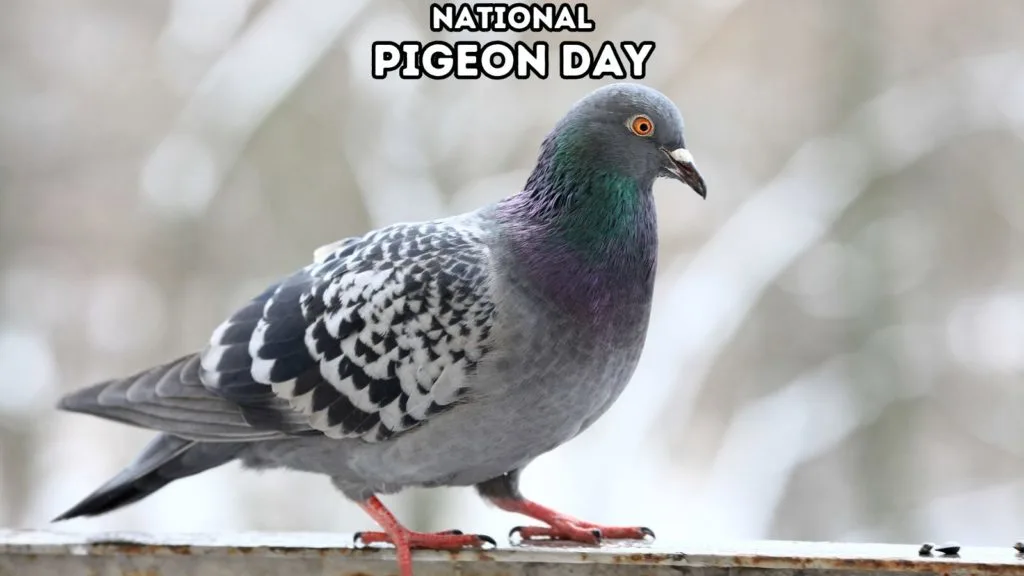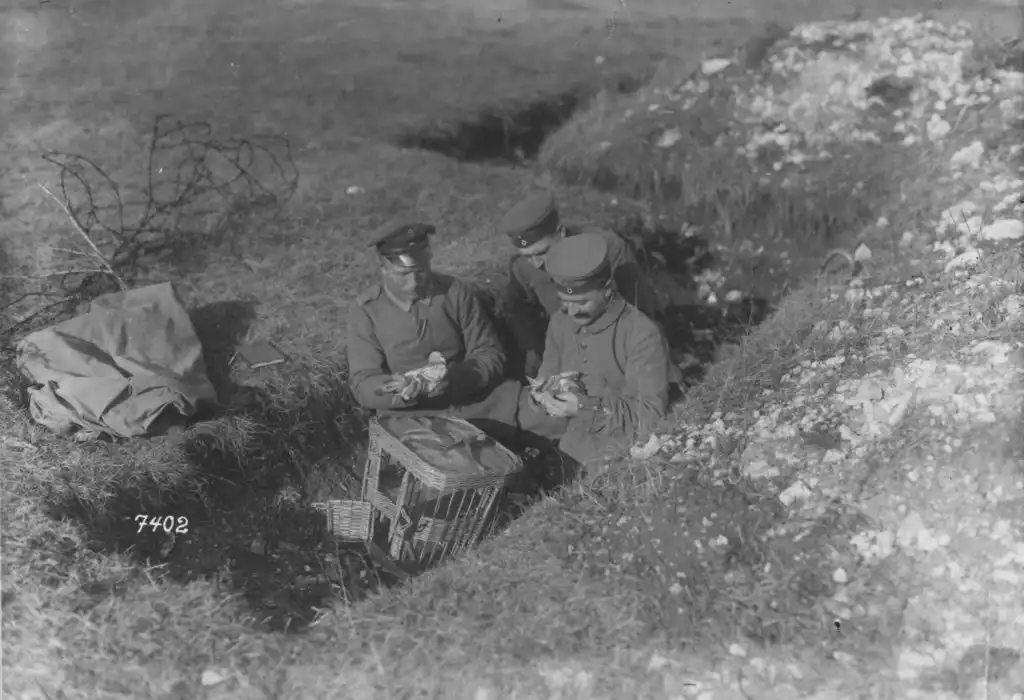National Pigeon Day is a commemoration of the significant role pigeons have played in human history, particularly during the World Wars. The establishment of this holiday is attributed to the efforts of pigeon enthusiasts and historians who recognized the need to honor these often-underappreciated birds.

When is National Pigeon Day?
National Pigeon Day is celebrated annually on June 13. The observance of National Pigeon Day gained official recognition when President Woodrow Wilson acknowledged the historical and cultural significance of pigeons, particularly their contributions during World War I. Today this bird holiday celebrates pigeons and remembers the important role that pigeons played in both world wars.
June 13 was selected as National Pigeon Day because it was the day one of the most famous World War I pigeons, Cher Ami, died.

Pigeons were used at the Western Front to keep commanders in the rear up to date on the action and enemy movement. (National Archives Identifier 17391468)
Pigeons played a crucial role in both World Wars as reliable and efficient messengers. In an era before advanced communication technology, these birds provided a vital link between troops on the front lines and command centers. Their speed and homing ability made them indispensable for conveying important messages, often flying through dangerous conditions to deliver vital information. Numerous pigeons were awarded medals and honors for their service, highlighting their bravery and significance in wartime efforts.
During World War I and World War II, pigeons played a vital role in military communications, and their service was extensive. It’s estimated that over 100,000 pigeons were used for military purposes during World War I. These pigeons were employed for various tasks, including delivering messages from the front lines to headquarters, which was often a critical form of communication when other means were unavailable or too risky.
In World War II, the use of pigeons continued, with both the Allies and the Axis powers utilizing these birds for communication and intelligence gathering. The United Kingdom alone is reported to have used about 250,000 carrier pigeons during World War II.
Cher Ami: The War Hero Pigeon
One of the most celebrated pigeons in history is Cher Ami, a hero of World War I whose bravery exemplifies the critical role pigeons played during wartime. Cher Ami, whose name means “Dear Friend” in French, was a homing pigeon who served in the U.S. Army Signal Corps and is best known for heroic service in the Battle of the Argonne Forest.
The Life-Saving Mission
In October 1918, Cher Ami was tasked with a mission that would prove pivotal. Over 500 men of the “Lost Battalion” of the U.S. Army’s 77th Division were trapped behind enemy lines without food or ammunition. They were also coming under friendly fire as their location was unknown to allied forces. Cher Ami was released with a message tied to one leg, urging the cessation of friendly fire and indicating the battalion’s position.
Bravery Under Fire
During the flight to deliver this crucial message, Cher Ami was shot down but managed to take flight again. Despite being severely wounded, Cheri Ami flew 25 miles in just 25 minutes, a journey that ultimately saved the lives of nearly 200 soldiers.
Legacy and Recognition
Upon delivering the message, Cher Ami was gravely injured, having been shot through the breast, blinded in one eye, and with a leg hanging only by a tendon. Despite these injuries, the pigeon survived and was fitted with a wooden leg. For his heroic actions, Cher Ami was awarded the French Croix de Guerre with Palm, one of France’s highest military honors.
Cher Ami’s story became legendary, symbolizing not only the bravery of war animals but also the indispensable role of carrier pigeons in wartime communication.
Cher Ami’s Legacy Today
After the war, Cher Ami was brought to the United States and became a symbol of courage and determination. After the pigeon’s death in 1919, Cheri Ami was preserved and is currently on display at the Smithsonian National Museum of American History. (And the Smithsonian Institute was eventually able to answer a longtime question: was Cheri Ami male or female? Although you might not guess it from the name, Cheri Ami was male.)
10 Fun Facts About Pigeons
- Homing Instinct: Pigeons have an extraordinary homing ability, allowing them to find their way back to their nests over incredibly long distances.
- Ancient Messengers: Pigeons have been used as messengers for thousands of years, dating back to ancient civilizations like the Egyptians and Romans.
- Fast Flyers: These birds can fly at average speeds of up to 77.6 mph and are known for their endurance and ability to cover long distances.
- Colorful Vision: Pigeons can see a spectrum of colors beyond human capabilities, including ultraviolet light, which aids in navigation.
- Lifespan: In the wild, pigeons typically live for around 3-5 years, but in a protected environment, they can live for over 15 years.
- Intelligent Birds: Pigeons are considered one of the most intelligent bird species. They can recognize themselves in mirrors and can be trained to perform complex tasks.
- Diverse Diet: While often seen eating seeds and scraps in urban areas, pigeons are naturally granivorous and will consume a variety of seeds and grains.
- Global Presence: Pigeons are found worldwide, except in the coldest areas like Antarctica and the harshest deserts.
- Social Creatures: Pigeons are highly social and often seen in flocks. They also mate for life and share parenting duties.
- Monuments and Memorials: Several monuments around the world have been erected in honor of pigeons and their service, especially during wartime.
National Pigeon Day is not only about acknowledging the historical importance of these birds but also about appreciating their presence in our modern lives. Bird enthusiasts and the public are encouraged to learn more about pigeons, dispelling common misconceptions and appreciating their remarkable traits and contributions.
More Bird Holiday
Special bird awareness days are observed throughout the year; you also might enjoy these bird holidays:
- Does Bird Seed Expire? - May 11, 2024
- How Big Are Baby Hummingbirds? - May 5, 2024
- How to Prevent Mold in Hummingbird Feeder - May 2, 2024
